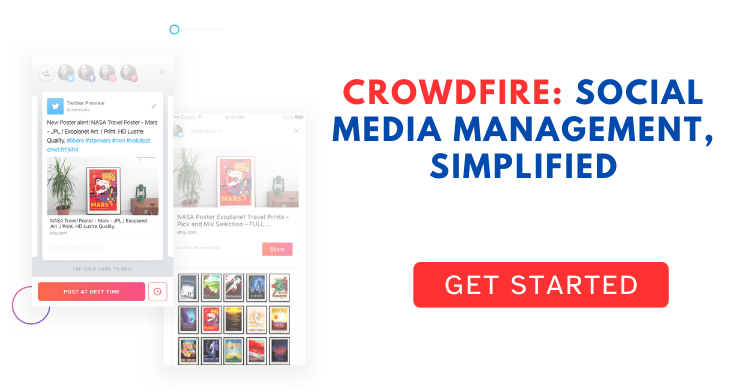
As the host of a well-liked live stream, you dedicate numerous hours every week to connecting live with your audience. However, the issue lies in the fact that you haven’t discovered a method to generate income from the time, dedication, and enthusiasm you invest in your live videos. Within the eyes of your viewers, you are merely seen as a free entertainment channel.
Starting monetization of live streams does not require creators to have millions of subscribers. Additionally, there are faster and simpler alternatives to incorporating pre-roll ads on platforms such as YouTube.
If you are prepared to convert top-notch live streams into a means of earning money, then you have come to the correct location. This guide will provide you with efficient methods to generate income through live streaming as a content creator, including details on the potential earnings of each strategy.
How to make money live streaming
1. Donations or tips from fans
If you’re looking for a sign that your streaming hobby/side gig/career is progressing positively, simply wait for your first donation or tip. It is truly gratifying to know that someone out there appreciates your efforts enough to send you a few dollars.
The majority of live streaming platforms and websites provide the opportunity to earn money through receiving donations or tips from viewers. These platforms often have integrated services or their own virtual currencies or goods that viewers can utilize for the transaction.
Below is a breakdown of the donation/tip systems utilized by the major platforms, taking into consideration each step of the process.
- YouTube’s main tipping service is Super Chat. Viewers can use tips to pin messages in your channel’s chat window, making them more noticeable. YouTube also lets users buy chat animations called Super Stickers, and you get a cut of each purchase.
- Twitch allows viewers to “cheer” using Bits, the platform’s virtual currency. If you’re a Twitch affiliate or partner, you get around $0.01 for every Bit viewers use when cheering. The viewers get to write a message that appears together with a special kind of emote Twitch calls a Cheemote.
- Facebook’s tipping service revolves around Stars, a type of virtual good viewers can buy and send to you, giving you $0.01 per Star. You need to be a part of Facebook’s Level Up program to enable Stars. Facebook also supports fundraising charitable donations for U.S.–based 501(c)(3) organizations.
When you are given a tip, make sure to acknowledge the person who gave it. If the tip is accompanied by a message or a question during a live AMA (Ask Me Anything), it is advisable to prioritize it over other questions.
If you don’t want to use the tipping system within the streaming platform — or you don’t meet the requirements to use it — you can use a third-party platform. Some of the most common ones for streamers are:
- StreamElements for one-time donations and tips. This platform integrates easily with Twitch, YouTube, Facebook Gaming and Trovo, and it offers different payment options.
- Patreon for regular donations/subscriptions. With the ability to let patrons set monthly pledges, Patreon is the closest you can get to a subscription system without going through a streaming platform’s program.
- GoFundMe or Kickstarter for project-based funding. If you have a project to complete and you’re looking for funding, set up pages on these websites and use your live streams to promote it.
If you use Restream for streaming, it’s simple to incorporate a Patreon or GoFundMe link as a QR code overlay during your stream.
When considering these services, it is important to think about providing unique rewards and content for those who support you. However, it is crucial to carefully determine which content should be exclusive and which should remain free. You cannot hide all your premium content behind a subscription as some of it should be accessible to attract new viewers.
2. Paid subscriptions from viewers
Receiving an occasional tip from your viewers is nice, but consistent payments are preferable. Typically, these payments will earn you a few dollars each, but if you can accumulate enough of them, they will accumulate. However, in order to access this type of support, you must meet certain requirements, as platforms exclusively offer it to members enrolled in their content creator programs.
Below is an overview of the recurring payment features offered by the major platforms. OR The following information provides an overview of the recurring payment features available on the major platforms.
- YouTube has a channel membership program that allows users to subscribe to its channels with monthly payments. To open your YouTube channel (where you group your videos) to this opportunity, you need to be in the YouTube Partner Program and meet additional eligibility requirements.
- Twitch has a paid subscription program that lets you earn from paid subscriptions if you’re an Affiliate or Partner. Your viewers get one subscription for free through Twitch Prime, or they can pay for them using PayPal, Amazon Pay, or credit cards.
- Facebook Gaming extended its Fan Subscriptions feature to Level Up gaming content creators. You must achieve a certain number of returning weekly viewers, and the feature is only available in certain regions.
If the platform permits, it is advisable to produce content specifically for your subscribers. This is a delightful method to demonstrate your gratitude to your most dedicated viewers. Additionally, it is important to acknowledge and commend individuals who subscribe, as well as mention their subscription anniversaries.
You can utilize third-party services such as Patreon to establish regular payments or subscriptions from your supporters.
3. Revenue from ads
You too can start earning some decent ad money by joining the right streaming platform or social network, as advertising revenue drives half the internet, including Google services and Facebook.
If you choose to broadcast live videos on platforms such as YouTube or Facebook, there is a possibility that you can utilize their advertising programs, which offer various types of in-stream ads. Here is an explanation of the typical options available.
- Pre-roll ads: These ads play as soon as a viewer clicks on your stream. They have to view the ad before they can start watching your content.
- Mid-roll ads: Mid-roll ads play in the middle of your live stream. Your stream continues in a smaller window while the ad takes up most of the screen.
- Display and overlay ads: These types of ads usually pop up as banners or small cards on top of your stream.
If your goal is to make money with advertisements, you should become a member of these platforms.
- YouTube offers pre-roll and mid-roll ads, as well as display and overlay ads.
- Facebook offers mid-roll ads if you meet the viewership number criteria.
- Twitch offers in-stream ads, as well as display and native ad opportunities.
Advertising in live streaming is consistently debated and often causes controversy. It is advisable to exert as much influence as possible over the advertisements exhibited while streaming or on your channel. Additionally, keep in mind that viewers have the option to utilize ad-blocking software to deter certain ads. Consequently, relying solely on ads to monetize your live streaming may not be the most advantageous approach.
4. Brand deals and sponsorships
Another avenue to generate income while streaming is through brand deals and sponsorships by establishing mutually beneficial relationships with businesses. If you have a significant number of followers on streaming platforms, brands will approach you with opportunities. Alternatively, you can proactively approach brands if they haven’t reached out to you.
It is beneficial to approach brands in a professional and meticulous manner. Your profit is dependent on the brands agreeing to compensate you. It is important to thoroughly negotiate all aspects of the agreement to ensure that both parties are fully aligned with your commitment.
There are several ways in which you can earn money.
- Sponsorships, where whole streams are sponsored by a brand.
- Banners and other types of advertisements you can display during your streams or on your channel or profile page.
- Sponsored content, like when a game developer pays you to play their game.
To grab a brand’s attention, it is crucial to have a significant number of viewers and a thorough comprehension of their demographics, interests, and specific issues they require assistance with. It is important to exercise caution when entering into partnerships or agreements that may compromise your integrity, as such actions might not sit well with your audience. Losing your audience also means losing sponsorship opportunities.
5. Launch your own exclusive live streaming platform
Starting their live streaming career on social media platforms such as Twitch, TikTok Live, Facebook Live, or YouTube Live is a common practice among many creators. While these platforms are excellent for building an audience, depending on them solely for monetization purposes carries a certain level of risk.
This is due to the fact that they possess complete authority over your live streams. They possess the ability to deactivate your account without any possibility of resolution, restrict your visibility within their internal search engines, and obtain a significant portion of the revenue generated from the advertisements displayed during your stream.
In order to make money from your live streams in a sustainable and profitable manner, the best approach is to create your own platform, particularly your own live streaming website. Uscreen provides you with the opportunity to develop a platform that enables you to:
- Host your own live streams
- Engage your audience in real-time with features like stickers and super chat
- Charge a one-off or subscription fee
- Control your marketing
- Keep 100% of what you earn, regardless of how your viewers pay
6. Sell pay-per-view streams
An alternative method to earn money from video streaming is by hosting pay-per-view (PPV) streams, where viewers pay a one-time fee to access your stream. PPV streams are ideal for sharing unique or exclusive content during your live stream.
- Workshops
- Masterclasses
- Tutorials
Your Book of Memories has integrated the PPV video model into its monetization strategy as a creator. With an extensive collection of videos imparting knowledge on creating memory books, individuals can become members of the program to gain full access to the entire video library.
Additionally, you have the choice of purchasing individual videos for a single payment. The greatest advantage is that you are not required to manually handle each sale when generating revenue from your live broadcast using PPV streams.
Uscreen platforms can simplify the processing of payments for PPV live streams, eliminating the logistical challenges. Users have the option to pay with their credit card or through a payment gateway such as PayPal. Additionally, it is possible to restrict access, communicate with customers during the stream, and establish subscription plans for upcoming live streams, all through a unified dashboard.
7. Create and sell your own products
Making your own digital products is a great method to earn money from your live stream viewers. Numerous spectators watch live streams with a readiness to purchase something fresh. As per a report, 60% of purchasers have invested between $20 and $100 on items they have observed in a live stream.
The product you offer will rely on your niche, as it must attract your viewership and align with your brand.
If you want to sell physical products with your own brand, such as stationery, mugs, or clothing, you will need to invest more cash upfront. However, this can be a lucrative source of income, particularly if you have a group of fans who are interested in representing your brand.
On the contrary, creating digital products may take longer and require more time, but the financial investment is lower overall. Additionally, the cost is only required once, allowing you to sell them multiple times. Popular examples of digital products include:
- eBooks
- Courses
- Webinars
- Membership sites

